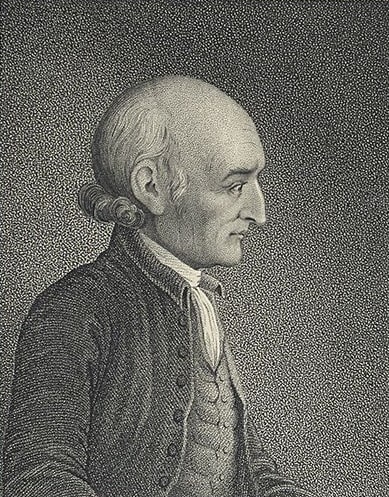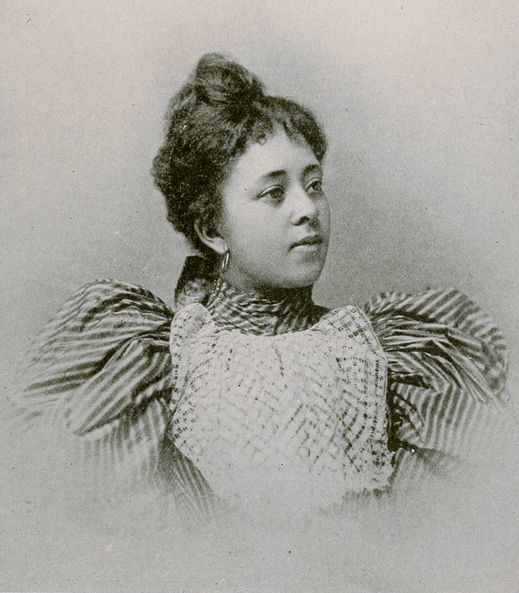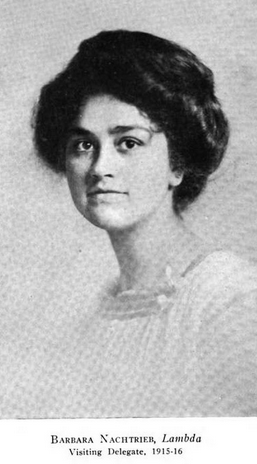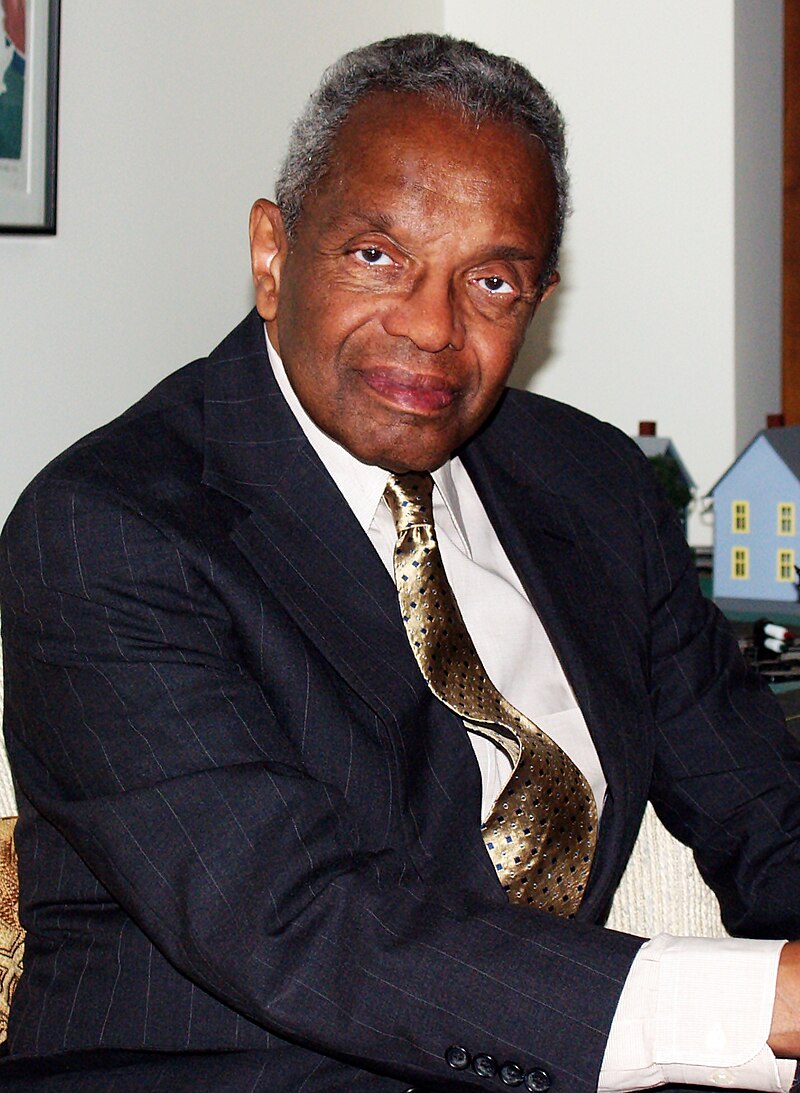A new semester has just begun and campuses across the country are once again teeming with life: students rushing to class, libraries bustling with researchers and learners, professors passing out their freshly printed syllabi. What better way to get some inspiration for this school year than from some of the most influential, courageous, and barrier-breaking law professors in American history? Best of all, you can learn all about them right within HeinOnline’s flagship database, our Law Journal Library. In this edition of Behind the Bindings, we’ll introduce you to four impactful law instructors that have shaped the course of legal education in the U.S. today, as well as point you to articles in HeinOnline where you can continue your own research.
1. George Wythe
George Wythe is recognized as the first law professor in the United States, beginning his teaching career at the College of William & Mary in 1779. Before that, he was a Virginia judge, a signatory of the Declaration of the Independence, and a Founding Father of the United States. Among his apprentices were Thomas Jefferson, John Marshall, and Henry Clay. In fact, he left his library to Jefferson in his will (and, conveniently, we have it digitized in HeinOnline in a handy subcollection of our Legal Classics database). Despite being born to a wealthy plantation family, Wythe opposed slavery and freed his slaves after the American Revolution. His anti-slavery views were reflected in his judicial decisions. He served at both the state and federal levels and participated in several notable cases, such as Commonwealth v. Caton, in which he upheld judicial review of the legislature and set the stage for Justice Marshall’s decision in Marbury v. Madison[1]William Marbury v. James Madison, Secretary of State of the United States, 5 U.S. 137, 180 (1803). This case can be found in HeinOnline’s U.S. Supreme Court Library. two decades later.

Check out these articles to learn more about Wythe’s life and legacy:
- Hither Shall You Go, But No Further – George Wythe and the Origin of Judicial Review
- George Wythe – Revolutionary Lawyer, Teacher and Judge
- George Wythe: Early Modern Judge
2. Lutie A. Lytle
Throughout her career, Lutie A. Lytle broke barriers placed before her because of her race and gender. Born to formerly enslaved parents in Tennessee in 1875, Lytle became a clerk for the Kansas legislature when she was 16 and wrote articles for a local African-American newspaper. She attended law courses at Central Tennessee College and graduated valedictorian, and she became the first woman admitted to the Tennessee State Bar. But she didn’t stop there. She returned to Central Tennessee College and in 1898 joined the law faculty, becoming one of the first women law professors in the United States. Lytle eventually married and moved to New York City, where she gave lectures and worked at her husband’s law practice, which she took over after his sudden death in 1913.

Later in her life, she became affiliated with the Democratic Party and the Regular Colored Democratic Association of Kings County. Her goal as an advocate and attorney, she stated, was “mak[ing] a sincere and earnest effort to improve [black Americans’] condition as citizens.”
These articles in the Law Journal Library can introduce you to more of Lytle’s achievements and impact:
- The Promise of Lutie A. Lytle: An Introduction to the Tenth Annual Commemorative Lutie A. Lytle Black Women Law Faculty Workshop Iowa Law Review Issue
- I Shall Talk to My Own People: The Intersectional Life and Times of Lutie A. Lytle
- Black Women Lawyers: 125 Years at the Bar; 100 Years in the Legal Academy
3. Barbara Nachtrieb Armstrong
Barbara Nachtrieb Armstrong was born in San Francisco in 1890. She graduated from University of California, Berkeley with an economics degree and attended law school at the University of California’s School of Jurisprudence. She was admitted to the California Bar in 1915. After working as the executive secretary of the California Social Insurance Commission for four years, she returned to Berkeley to earn a Ph.D. in economics. While there, she was appointed to faculty of the law school and economics department, becoming the first woman full-time faculty member at a law school approved by the American Bar Association. Armstrong traveled across Europe studying social insurance policies, and she became an expert in the subject, helping to draft the Social Security Act of 1935.[2]To provide for the general welfare by establishing a system of Federal old-age benefits, and by enabling the several States to make more adequate provision for aged persons, blind persons, dependent and crippled children, maternal and child welfare, … Continue reading She also published various works about social insurance policies such as minimum wage.

Learn more about Barbara Nachtrieb Armstrong and read some of her works yourself by checking out the Law Journal Library links below:
- Barbara Nachtrieb Armstrong–In Memoriam: The Light-Years of Barbara Armstrong: 1890-1976
- The Federal Social Security Act and Its Constitutional Aspects
- Social Insurance Abroad and at Home: The Background of Social Security Legislation
4. Derrick Bell
Born to a working-class family in Pennsylvania in 1930, Derrick Bell attended Duquesne University and served in the United States Air Force. He graduated with an LL.B. from the University of Pittsburgh in 1957. After graduating, he worked for the Civil Rights Division in the United States Department of Justice, and he authored the first casebook that examined the law’s impact on race relations. After he left the Justice Department, he moved to Pittsburgh and was recruited by Thurgood Marshall to join the National Association for the Advancement of Colored People (NAACP) Legal Defense Fund. He worked closely with other civil rights attorneys and oversaw more than 300 school desegregation cases. Eventually, Bell turned to academia—he served on faculties at USC Gould School of Law, Harvard Law School (where he became the first Black tenured law professor), University of Oregon School of Law, and NYU School of Law.

Additionally, Bell developed the foundations of critical race theory with his textbook Race, Racism, and American Law. Today, his theories are used in law schools across the country and have influenced the Black Lives Matter movement.
Learn more about Derrick Bell’s impact on legal education with these articles:
- Derrick Bell: Godfather Provocateur
- Discerning Critical Moments: Lessons from the Life of Derrick Bell
- The R-Word: A Tribute to Derrick Bell
Explore More with the Law Journal Library
The Law Journal Library is your best friend when it comes to acing the new semester. Take these four influential professors in legal history as your inspiration as you dive into articles covering more than 1,500 subjects. You never know what you might discover!
HeinOnline Sources[+]
| ↑1 | William Marbury v. James Madison, Secretary of State of the United States, 5 U.S. 137, 180 (1803). This case can be found in HeinOnline’s U.S. Supreme Court Library. |
|---|---|
| ↑2 | To provide for the general welfare by establishing a system of Federal old-age benefits, and by enabling the several States to make more adequate provision for aged persons, blind persons, dependent and crippled children, maternal and child welfare, public health, and the administration of their unemployment compensation laws; to establish a Social Security Board; to raise revenue; and for other purposes., Public Law 74-271 / Chapter 531, 74 Congress. 49 Stat. 620 (1919-1936) (1935). This act can be found in HeinOnline’s U.S. Statutes at Large database. |



